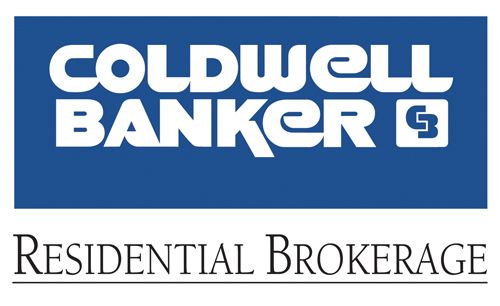Every year when the daffodils start blooming, it is time to think about the spring home cleaning. I’m certain you keep a Green Home as much as possible and here is your another chance to protect the environment this spring with GREEN Spring Home Cleaning. ENJOY this annual rite of home ownership!
Let’s start with the windows :-)
WINDOWS
Mix a green window cleaning solution
Commercials cleaners leave behind a waxy residue on windows that can result in streaks. A homemade window cleaning solution made with vinegar and water helps cut through grime, minimizes streaking and water spots, and prevents windows from fogging.
The first time you clean your windows with a homemade vinegar solution, include a few drops of dish detergent to eliminate the waxy buildup. Combine these ingredients in a spray bottle for streak-free windows:
- ¼-cup white vinegar
- ¼ eco-friendly dish detergent
- 2 cups water
After an inaugural washing, keep your windows spotless with a window cleaning solution made from
- 2 teaspoons white vinegar mixed in
- 1 quart warm water. (Too much vinegar can etch window glass, which results in clouding.)
Polish to a sustainable shine
Use microfiber cloths, rather than paper towels or newspapers, for window cleaning. Paper towels are manufactured from trees and end up in the landfill. Newspapers can blacken your hands and fall apart. Microfiber cloths are affordable, lint-free, and can be washed and reused again and again.
Window cleaning tips
- Window cleaning on a sunny day can dry the solution too quickly and create streaks, so select a cloudy day to work
- Begin window cleaning by spritzing the glass with your homemade vinegar solution. Wipe away grime with a damp microfiber cloth. Rinse this cloth often in clean water
- Follow with a dry microfiber cloth to polish the glass to a shine
- Be sure to pay attention to the corners and edges, so the entire window is clean
.
.
BATHROOMS
When it’s time to get down and dirty, many people start with the bathroom. Allen Rathey, founder of The Housekeeping Channel, says removing mineral deposits, rust, and such from toilets doesn’t have to mean chemical warfare.
Don rubber gloves and if you want more scouring power, Rathey recommends mixing baking soda with acidic vinegar. The concoction is just as effective as conventional cleaners, and there are no toxic fumes to inhale. This approach works equally well on tub and shower stains.
.
KITCHEN
The kitchen can be a tough room to clean because there’s usually so much stuff in it, says Justin Klosky, founder and creative director of The OCD Experience, an organizational service. Before you break out the broom, go through your cabinets and drawers, and put together a box of items to donate and a box of items to store somewhere besides the kitchen. Clear your countertops of everything except items you use nearly every day.
After you’ve de-cluttered, you can get to work cleaning. Cloud Conrad, vice president of marketing for cleaning company Maid Brigade, says one tool you shouldn’t overlook is an all-purpose microfiber cloth (about $5). Microfiber is a densely woven synthetic fabric that picks up dirt and greasy deposits without chemicals thanks to its unique composition. You should be able to clean surfaces like countertops, sinks, and stoves with warm water, a microfiber cloth, and a bit of elbow grease.
Since you prepare your food in the kitchen, consider using green commercial products for surfaces, or make your own vinegar/water spray. Conventional cleaners may remove dirt, but they can also harbor some nasty substances you don’t want in your PB&J.
Microfiber, vinegar, and baking soda will clean and disinfect almost every kitchen surface at a fraction of the price. Don’t neglect once-a-year chores like vacuuming refrigerator coils (unplug your fridge first), and tossing out expired food from the back of the pantry.
.
BEDROOMS
Bedrooms are probably the most important rooms in the home. Most homeowners should at least rotate and flip innerspring mattresses, and store out-of-season sheets and clothing. Also go through your closets, and donate any items you haven’t worn in the last 12-24 months. For carpets and mattresses, consider using a professional cleaning service.
Before you have your carpet professionally cleaned, you need to use the vacuum hose attachment to get to the hidden particles along baseboards, under your bed, and in your curtains, favorite environments of dust mites. Also dry clean or wash in cold water and woolite all drapes and curtains.
.
LIVING AREA
Another surface you should consider getting professionally cleaned is living room upholstery. It can be tricky to know exactly how to deep-clean different types of fabrics, says Rathey, especially if there are stains you can’t quite identify. Costs vary widely depending on the size of the furniture piece and the quality and state of its covering, but a typical sofa might run $70 to $90.
Microfiber cloths are great to use in the living area as well. Make sure you have cloths for each area of the house, though, so you’re not cross-contaminating bathroom, kitchen, and living areas. Use a damp microfiber cloth to wipe down windows, wood, mirrors, the tops of bookshelves, ceiling fan blades, and even the plastic housing of electronics for a quick, chemical-free clean.
.
De-bug the light fixtures
See that bug burial ground within your overhead fixtures? Turn off the lights and carefully remove fixture covers, dump out flies and wash with hot soapy water. While you’re up there, dust bulbs. Dry everything thoroughly before replacing the cover.
Vacuum heat vents and registers
Dirt and dust build up in heat vents and along register blades. Vents also are great receptacles for coins and missing buttons. Unscrew vent covers from walls or pluck them from floors, remove foreign objects, and vacuum inside the vent. Clean grates with a damp cloth and screw back tightly.
Polish hardware
To deep clean brass door hinges, handles, and cabinet knobs, thoroughly wipe with a damp microfiber cloth, then polish with Wright’s or Weiman brass cleaner ($4). Dish soap shines up glass or stainless steel knobs. Use a Q-tip to detail the ornamental filigree on knobs and handles.
.
.
DO YOU SHARE YOUR HOME WITH YOUR PETS?
Pets can be great companions, but pet odors can also derail your home sale. Here are tips on house cleaning your home and making it buyer friendly.
Air your house out. While you’re cleaning, throw open all the windows in your home to allow fresh air to circulate and sweep out unpleasant scents.
Once your house is free of pet odors, do what you can to keep the smells from returning. Crate your dog when you’re out or keep it outdoors. Limit the cat to one floor or room, if possible. Remove or replace pet bedding.
Scrub thoroughly. Scrub bare floors and walls soiled by pets with vinegar, wood floor cleaner, or an odor-neutralizing product, which you can purchase at a pet supply store for $10 to $25.
Try a 1:9 bleach-to-water solution on surfaces it won’t damage, like cement floors or walls.
Got a stubborn pet odors covering a large area? You may have to spend several hundred dollars to hire a service that specializes in hard-to-clean stains.
Wash your drapes and upholstery. Pet odors seep into fabrics. Launder, steam clean, or dry clean all your fabric window coverings. Steam clean upholstered furniture.
Either buy a steam cleaner designed to remove pet hair for around $200 and do the job yourself, or pay a pro. You’ll spend about $40 for an upholstered chair, $100 for a sofa, and $7 for each dining room chair if a pro does your cleaning.
Clean your carpets. Shampoo your carpets and rugs, or have professionals do the job for $25 to $50 per room, depending on their size and the level of filth embedded in them. The cleaner will try to sell you deodorizing treatments. You’ll know if you need to spend the extra money on those after the carpet dries and you have a friend perform a sniff test.
If deodorizing doesn’t remove the pet odor from your home, the carpets and padding will have to go. Once you tear them out, scrub the subfloor with vinegar or an odor-removing product, and install new padding and carpeting. Unless the smell is in the subfloor, in which case that goes next.
Paint, replace, or seal walls. When heavy-duty cleaners haven’t eradicated smells in drywall, plaster, or woodwork, add a fresh coat of paint or stain, or replace the drywall or wood altogether.
On brick and cement, apply a sealant appropriate for the surface for $25 to $100. That may smother and seal in the odor, keeping it from reemerging.
Control ongoing urine smells. If your dog uses indoor pee pads, put down a new pad each time the dog goes. Throw them away outside in a trash can with a tight lid. Remove even clean pads from view before each showing.
Replace kitty litter daily, rather than scooping used litter clumps, and sweep up around the litter box. Hide the litter box before each showing.
Relocate pets. If your dog or cat has a best friend it can stay with while you’re selling your home (and you can stand to be separated from your pet), consider sending your pet on a temporary vacation. If pets have to stay, remove them from the house for showings and put away their dishes, towels, and toys.
ENJOY THE SPRING and YOUR BEAUTIFUL CLEAN HOME!!!
SOURCE: HouseLogic.com, Vivianne Rutkowski



39.112627
-77.553698
Read Full Post »





